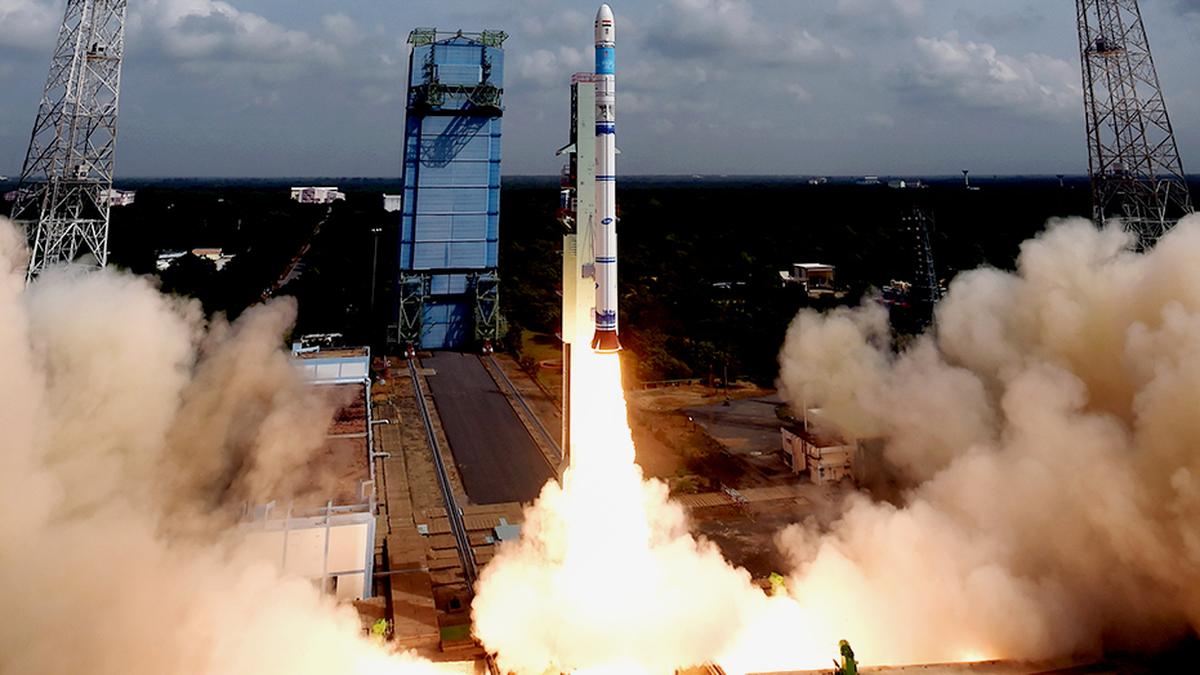- Courses
- GS Full Course 1 Year
- GS Full Course 2 Year
- GS Full Course 3 Year
- GS Full Course Till Selection
- Answer Alpha: Mains 2025 Mentorship
- MEP (Mains Enrichment Programme) Data, Facts
- Essay Target – 150+ Marks
- Online Program
- GS Recorded Course
- Polity
- Geography
- Economy
- Ancient, Medieval and Art & Culture AMAC
- Modern India, Post Independence & World History
- Environment
- Governance
- Science & Technology
- International Relations and Internal Security
- Disaster Management
- Ethics
- NCERT Current Affairs
- Indian Society and Social Issue
- NCERT- Science and Technology
- NCERT - Geography
- NCERT - Ancient History
- NCERT- World History
- NCERT Modern History
- CSAT
- 5 LAYERED ARJUNA Mentorship
- Public Administration Optional
- ABOUT US
- OUR TOPPERS
- TEST SERIES
- FREE STUDY MATERIAL
- VIDEOS
- CONTACT US
Container Port Performance Index (CPPI) 2023
Container Port Performance Index (CPPI) 2023
20-07-2024
- India's port development program achieved significant recognition as 9 Indian ports were included in the Global Top 100 for the first time in the Container Port Performance Index (CPPI) 2023.
- Credit for this achievement has been given to the Sagarmala programme, which focuses on modernising ports and enhancing their efficiency.
Key Highlights of the CPPI 2023
- The CPPI is a global index created by the World Bank and S&P Global Market Intelligence.
- It evaluates and compares the performance of container ports worldwide.
- The index ranks 405 global container ports based on efficiency, particularly the duration of port stays for container vessels.
- The main objective is to identify areas for improvement to benefit stakeholders in the global trading system and supply chains, including ports, shipping lines, national governments, and consumers.
|
|
|
|
|
|
|
|
|
|
|
|
|
|
|
India’s Position
- Visakhapatnam Port climbed from 115 in 2022 to 19 in 2023, marking the 1st time an Indian port reached the Global Top 20.
- Mundra Port improved its rank from 48 last year to 27 this year.
- Seven other Indian ports in the top 100 are:
- Pipavav (41)
- Kamarajar (47)
- Cochin (63)
- Hazira (68)
- Krishnapatnam (71)
- Chennai (80)
- Jawaharlal Nehru (96)
|
|
Scenario of India’s Port Ecosystem
- Maritime Transport: The Ministry of Shipping states that maritime transport handles about 95% of India's trade by volume and 70% by value.
- In November 2020, the Ministry of Shipping was renamed the Ministry of Ports, Shipping and Waterways by the Prime Minister.
- The Indian Government supports the ports sector by allowing up to 100% Foreign Direct Investment (FDI) under the automatic route for port and harbour construction and maintenance projects.
Major Ports vs Minor Ports
- Classification: Ports in India are classified as Major and Minor based on the jurisdiction of the Central and State governments under the Indian Ports Act, 1908.
- Major Ports: There are 13 Major Ports governed under the Major Port Trusts Act, 1963, owned and managed by the Central Government.
- Minor Ports: Minor Ports are governed under the Indian Port Act, 1908, and are owned and managed by the State Governments.
- National Perspective Plan for Sagarmala: Six new mega ports are planned under this initiative.
- The Sagarmala National Perspective Plan identifies specific opportunities for transportation of commodities such as thermal coal, fertilisers, food grains, cement and steel by coastal shipping and inland waterways.
Related Statistics
- Global Standing: India ranks as the 16th-largest maritime country with a coastline of 7,516 km.
- Economic Impact: The ports and shipping industry is crucial for the growth of India's trade and commerce.
- Trade Growth: The Ports sector is driven by high growth in external trade.
- In FY23, major ports handled 780 million tonnes of cargo, with a CAGR of 3.26% from FY16-23.
- In FY24 (April-January), major ports handled 680 million tonnes of cargo.
- Cost-effective Transport: Domestic waterways are recognized as a cost-effective and environmentally sustainable mode of freight transportation.
- Future Plans: The government aims to operationalize 23 inland waterways by 2030.
Major Initiatives
- Indian Ports Bill 2023: Proposed to enhance transparency in port tariffs and update penalties.
- It empowers the Maritime States Development Council (MSDC) for integrated planning and introduces a three-tier dispute resolution mechanism for conflicts between state maritime boards.
- Shipbuilding Financial Assistance Policy (SBFAP): Launched to support the shipbuilding industry under the Make in India initiative.
- The policy, operational until March 2026, provides financial aid to Indian shipyards to enhance competitiveness and secure global orders.
|
|
Challenges Faced by Port Sector in India
- Limited Global Presence of Indian Fleet: Despite a vast coastline and strategic location, Indian ships constitute less than 1% of the world's shipping fleet. In contrast, China holds around 19%.
- Seafarer Supply: India ranks 3rd globally in supplying sailors, providing nearly 10% of the world's seafarers, following China and the Philippines.
- High Turnaround Times at Indian Ports: High turnaround times at Indian ports reduce efficiency and increase costs for shipping companies.
- The average turnaround time at major Indian ports was approximately 2.48 days in 2022, compared to the global average of 0.97 days.
- Poor performance at ports disturbs schedules, increases import/export costs, reduces competitiveness, and hampers economic growth.
- This particularly affects Landlocked Developing Countries (LLDCs) and Small Island Developing States (SIDS).
- Infrastructure and Operational Inefficiencies: Ports face issues like poor road and rail connectivity within the port area and lack of cargo handling equipment and machinery.
- Insufficient hinterland (far from port area) connectivity and dredging capacity, along with a shortage of technical expertise, are significant challenges.
- Limited access to supporting infrastructure, such as insurance and financing companies predominantly based outside India.
- For example, many marine insurance companies are headquartered in London, posing challenges for Indian shipping firms to access cost-effective and reliable services domestically.
What are the steps needed to be taken to improve India’s shipping sector?
- Digitalisation: Integrating digital and physical connectivity can enhance port and shipping operations. Technologies like Artificial Intelligence (AI), the Internet of Things (IoT), and blockchain offer significant benefits.
- Port Modernisation: Ports need to invest continuously in technological, institutional, and human capacities to provide fast, reliable, and cost-efficient services.
- Collaboration between public and private sectors is crucial for achieving modernisation goals.
- Widen the Hinterland: Ports should aim to attract cargo from neighbouring countries and domestic production centres.
- Investments in corridors, regional trucking markets, and cross-border trade and transit facilitation can help expand ports' hinterlands.
- Promote Sustainability: Port stakeholders, including shipping lines, traders, social partners, and the port-city community, demand that ports fulfil their social, economic, and environmental sustainability obligations.



